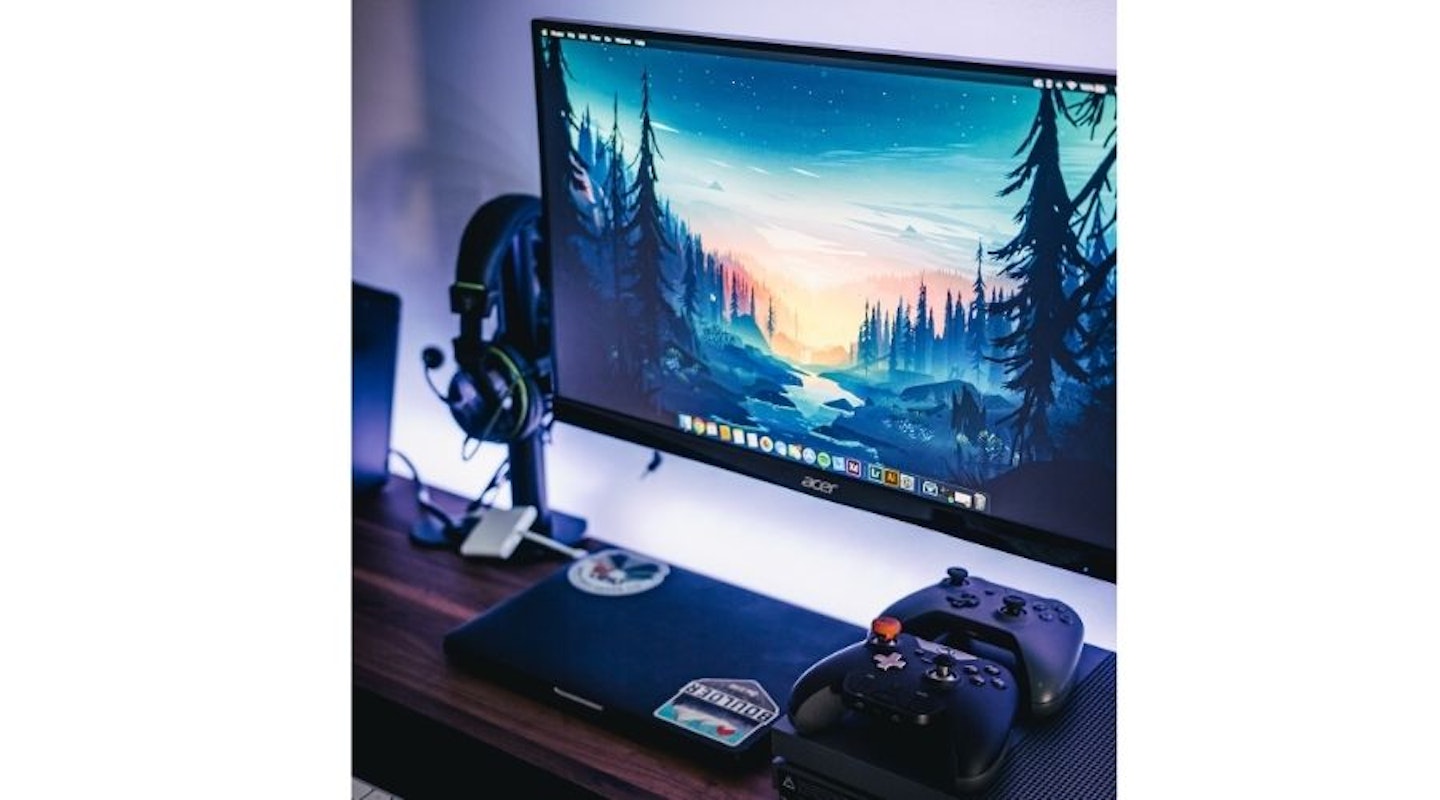If you’re on the hunt for a television or monitor, you might be wondering what the difference in resolutions mean and how they might impact your viewing experience. Ranging from HD all the way to 8K UHD, display quality has advanced incredibly over the last few years and the result is sharper images and better detail.
With so many options to choose from, it’s no surprise that choosing display poses quite the challenge for shoppers. To help you out, we’ve created a detailed guide on what display resolution refers to, the differences between each resolution and which resolution is best suited to you.
A brief resolution guide:
HD = 720p - 1280 x 720 pixels
Full HD = 1080p - 1920 x 1080 pixels
Quad HD (QHD) = 1440p - 2560 x 1440 pixels, often referred to as 2K
4K UHD = 2160p - 3840 x 2160 pixels, also referred to as ‘Ultra HD resolution’
8K UHD = 4320p - 7680 x 4320 pixels
Related: The best 4K TVs under £500
What is display resolution?
Starting off with the basics, TVs and monitor displays are made up thousands of tiny squares of light, called pixels. Display resolution refers to the number of distinct pixels displayed horizontally and vertically and is usually expressed by width x height; therefore a 1920 x 1080 screen can show 1920 pixels horizontally and 1080 pixels vertically.
What is the best resolution for a TV?
4K is the current buzzword of the TV tech world and is currently the best TV resolution for the vast majority of users. With four times more pixels than traditional HD TVs, the image quality provided by 4K is vivid and detailed, especially on larger TV screens.
8K has also made its way into the market, but due to incredibly high prices and lack of distributed 8K content, we suggest you hold off on 8K for a while longer.
Related: The best 55-inch TVs
What is the best resolution for me?
The resolution best suited to you will depend on your budget, TV size and living space. To help you out, we’ve created a detailed outline for each available option.
HD:
HD resolution, sometimes called HR-ready or 720p, offers a resolution of 1280 x 720 pixels. Once the most common screen resolution, HD TVs are now generally found on older, budget and small-screened TVs. It’s no longer recommended, particularly if your viewing distance is short.
Full HD:
A step up from 720p is Full HD resolution. Often referred to as 1080p, it’s a resolution that provides reasonably good image quality at an affordable price. Most content available today is distributed in 1080p.
Full HD resolution is mostly found on smaller TVs and monitors, as manufacturers are rapidly switching over to 4K displays for mid-size and large screens. If you’re looking for a new 1080p PC monitor, make sure that your screen is no larger than 28-inches for the best performance. With TVs, you’ll want to avoid anything larger than 50-inches.
Quad HD (QHD) / 2K
Frequently seen on gaming monitors, QHD resolution provides 2560 x 1440 pixels. With four times the sharpness of 720p, QHD takes a huge leap in quality and visual clarity making it ideal for gameplay. In comparison to higher resolution screens, QHD will not impact the usage of your graphics as heavily, another reason why it's great for gaming.
QHD is often referred to as 2K, a term that's generally applied across the industry when talking about a display where the larger dimension is over 2000 pixels. The resolution standard for 2K is actually 2048 × 1080, as outlined by The Digital Cinema Initiatives (DCI). More often than not, monitors and gaming laptops will have a resolution of 2560 x 1440 pixels, labelled as 2K QHD.
Related: [The best gaming monitors to truly unlock your game](http://The best gaming monitors to truly unlock your game)

4K UHD:
At 3840 x 2160 pixels, 4K Ultra-High Definition offers four times the image quality of the 1080p, full HD standard. 4K TVs have rapidly increased in popularity in the last few years, and for good reason; with sharp and nuanced image quality thanks to greater pixel density, 4K resolution provides the ultimate viewing experience and is also great for watching at short distances. Therefore, if your living space is limited, you don’t have to worry about eye fatigue as you sit closer to the screen.
In terms of affordability, whilst 4K TVs were once inaccessible to many due to higher cost, their prices have come down substantially over the past few years.
8K UHD:
With four times the pixels of a 4K screen, 8K moves up to 7680 x 4320, providing extreme pixel density and image clarity. This UHD resolution display is currently being sold by brands like Samsung, LG and TCL at a steep price point.
What is the best resolution for a monitor?
The higher the resolution, the better, especially if you’re planning on working at your screen all day. Anything with 1920 x 1080 pixels, otherwise known as 1080p, and above will work great for 28 to 32-inch monitor.
For gaming, we recommend 1440p at 120fps or 4K at 60fps.
Related: The best budget gaming monitors
What 4K content is available UK?
4K content is becoming all the more accessible, with streaming services such as Amazon Prime Video and Netflix offering a large catalogue of movies and TV shows in 4K. Netflix’s 4K content is only available in the priciest, top-tier subscription, while Amazon Prime Video offers 4K content via the standard Prime subscription.
BBC iPlayer’s 4K content is few and far between, but Blue Planet II and Planet Earth II can be enjoyed now in Ultra HD. Sky Q also offers 4K content in the form of TV shows, movies, Premier League games and documentaries, as does the Virgin Media V6 box and YouTube.
The PS4 Pro, PS5, Xbox One X and Xbox Series X can all play video games at 4K resolution.

Is resolution the most important factor in a TV?
While resolution is a key indicator of display quality, features such as contrast ratios, refresh rates, brightness and black level response will also highly influence your viewing experience.
Related: What size TV should I buy?
Can I watch lower resolution content on a high-resolution TV?
As we gradually make the shift to 4K resolution, there is occasionally a lack of 4K content available to watch. However, via a technology named 4K upscaling, the resolution of lower-quality content can be upgraded and optimised to fit the panel of a 4K display. This removes the image noise and improves contrast and colour representation of lower resolution content, allowing us to view it in 4K-like quality.
